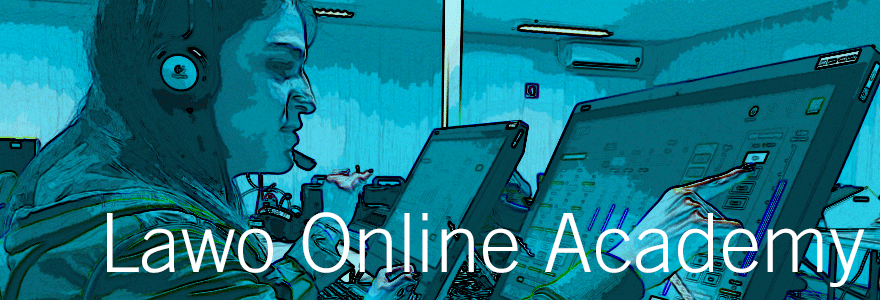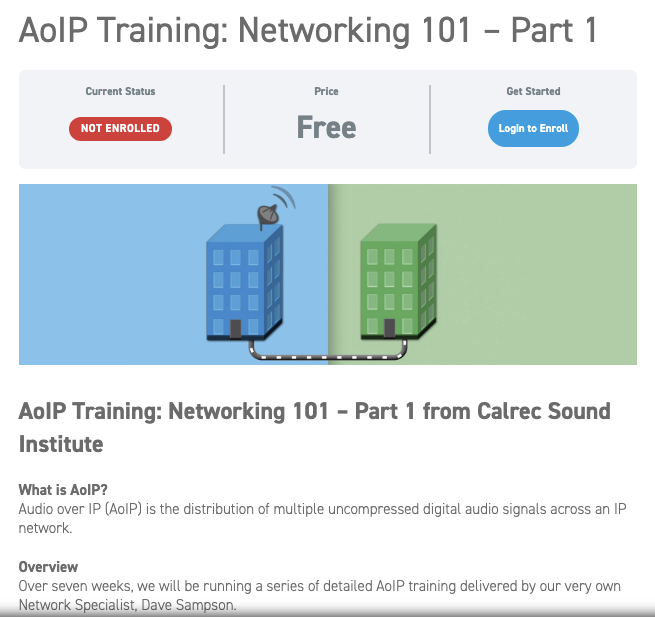Tech Focus: Audio Training, Part 1 — COVID Drives Online as Primary Mode of Educating Pros
Manufacturers, tech academies increase access by workers at home
Story Highlights
COVID has changed everything, including how we learn and teach. Schools from K-12 through graduate courses and technical institutions have migrated rapidly — and with varying degrees of success — to online models.
Pro audio was no exception to the trend.
Manufacturers, many of which had already established significant online training sites, leaned further into them. The efforts helped deepen understanding of key technologies as broadcast and other audio systems migrated to IP and also provided channels to deepen brand engagement at a time when the pro-audio sector is experiencing its own rounds of business consolidation.
“Many manufacturers have either implemented or increased their online training during this time, as people have been stuck at home and are working to improve their skills or, in some cases, retrain themselves,” observes Kevin Emmott, marketing manager, Calrec. Last summer, the company introduced the Calrec Sound Institute, a series of free and certifiable online course offerings covering such products as the compact Brio desk and Type R modular IP-based mixing system.
Although most of Calrec’s course takers were already broadcast-audio technicians looking to hone their skills, an analysis of the courses accessed during the summer revealed that more than a few course takers came from the live-sound sector, which had been effectively shuttered by COVID and largely remains so, even as broadcast sports have found ways to get and keep games and matches on the air. The finding may augur well for the industry’s historically limited pool of new trained workers.
The industry’s ongoing shift to IP infrastructure has also prompted Calrec to add a seven-part course focused on that trend, including 45-minute-long modules on such issues as network design and industry standards, and to integrate it into the company’s Connect IP management application.
“This has been the most popular of the online training courses,” Emmott notes, with more than 1,900 IP courses having been accessed so far. “For its niche, it has gone way beyond expectations.”
Calrec plans to partner with Dolby for an online course in mixing immersive audio using Atmos on a compact mixer such as the Brio. That training module is expected to launch this month or in April.
 According to Oliver Frenzel, manager, Lawo Academy and its online counterpart, the company has leaned more toward online offerings during the pandemic. Its educational effort covers a range of technical-training courses, addressing the company’s IP-based audio, video, control, and infrastructure solutions.
According to Oliver Frenzel, manager, Lawo Academy and its online counterpart, the company has leaned more toward online offerings during the pandemic. Its educational effort covers a range of technical-training courses, addressing the company’s IP-based audio, video, control, and infrastructure solutions.
“Our trainers used webcams to show what they do on the console surface, interacting with the customer equipment during the training [when] using remote-production capabilities of our products,” he explains. “The customer sees a picture-in-picture of himself and the product. In some cases, we were able to give students remote access to systems on our premises to enable a deeper learning experience with the product.”
Lucky Timing
More than one person has noted the serendipity in the arrival of COVID, which accelerated implementation of more-radical remote-broadcast operations. Now it appears that the pandemic has had a similar effect on training.
“It sounds almost too good to be true in terms of coincidental development,” says Thomas Jensen, VP, technical operations, SSL, “but we had intended our System T [SMPTE 2110-30-ready desk] from the beginning to be software-defined and remotely accessible.”
All console functions are available to users via touchscreen, in addition to hardware controls, and are accessible over public internet. Remote-desktop solutions, such as TeamViewer, provide software control as though the user were in front of the console itself, and SSL’s T-SOLSA PC application provides additional user positions, allowing multiple operators to control — and, by extension, train on — the console remotely.
Jensen notes that much of the remote operability had originally been compelled by such necessities as troubleshooting by technicians at a faraway factory. But, as COVID curtailed onsite visits to broadcast facilities for such purposes as console installation and commissioning, the System T’s virtuality was extended to those purposes as well. Further extending that to remote training was a natural next step.
“This wouldn’t have been possible on a previous generation of consoles,” which require a much higher level of tactile interaction, says Jensen. “There might also have been some reluctance to engage with training unless a trainer were physically onsite, just because that’s how it had always been done. But now we know how far training can be taken without having to set foot in the facility, so it’s likely going to be a large part of the future of training even once we can travel again.”
Training updates extend beyond audio consoles. Microphone and wireless-sysems manufacturer Shure also added new learning modules and webinars focused on broadcast and live events: for example, Shure Webinar: Workflow — Inside the NBA “Bubble” and Shure Webinar: Workflow — Broadcast From Home.
“A year ago, we noticed an immediate demand for virtual training,” says Dave Klein, director, Shure Audio Institute. “Once live events started to be canceled, we expanded Shure’s webinar schedule to provide up-to-date technical insights and training on a weekly basis. This was a significant increase from the monthly training webinars organized by the Shure Audio Institute.”
All of these webinars were developed because of the industry’s working from home.
A Bigger Picture
Formal education at technology academies continues to attract students for the various degrees and certificates those programs offer, although broadcast audio isn’t usually at the top of the list.
“Students want to learn to make beats on a laptop, not run cables on the sidelines of an NFL game; television is meaningless to them,” says Chris Davie, principal, Sonority Group, an educational marketing consultancy, and the former head of operations for SAE USA, the U.S. operations of the international School of Audio Education.
However, the shutdown of live shows and events and of music touring has led some students to look at other possible career paths. The growing connection between streaming and sports is putting production, of both esports and conventional sports, on their radars, and that’s also affecting now sports-media courses are being constructed and conducted.
“Much of the last year was all about how to still deliver these classes and make them effective, engaging, and worth it for students to keep studying,” he says. “Streaming makes sports accessible to students in a way it wasn’t before. Now we’re seeing the networks expecting their new hires to have exposure to multiple media platforms — not just Pro Tools but also Adobe Creative Suite. In streaming, it won’t be enough to just be an audio person anymore.”
Click here for Tech Focus: Audio Training, Part 2 — Manufacturers’ Online Efforts Encompass Broadcast Sound

